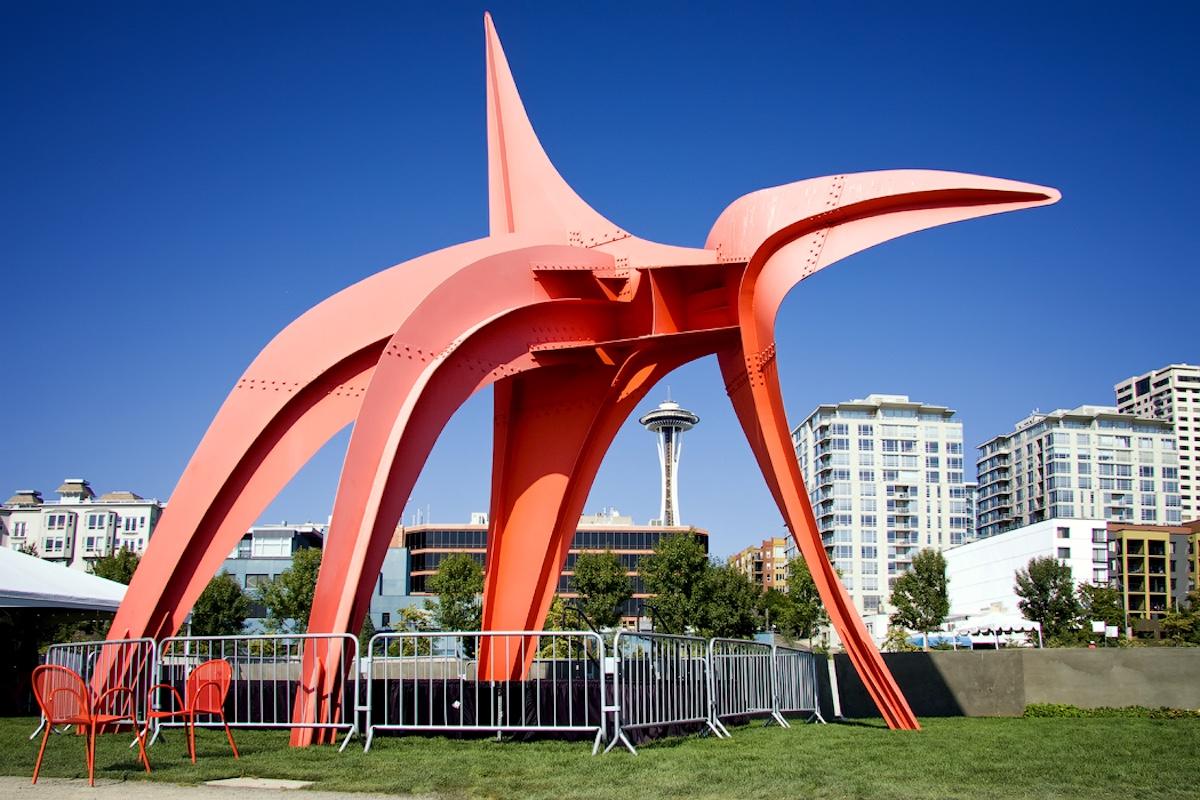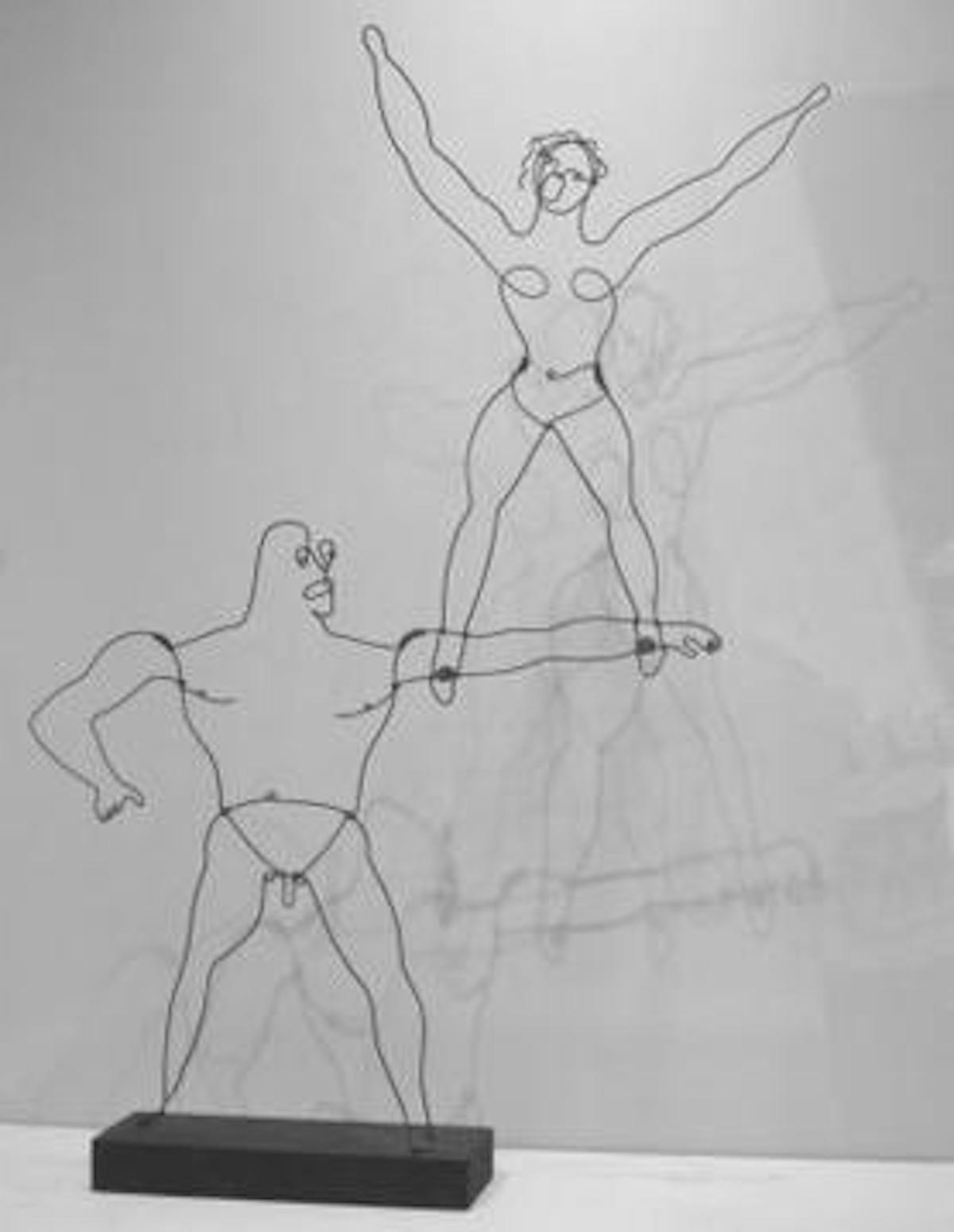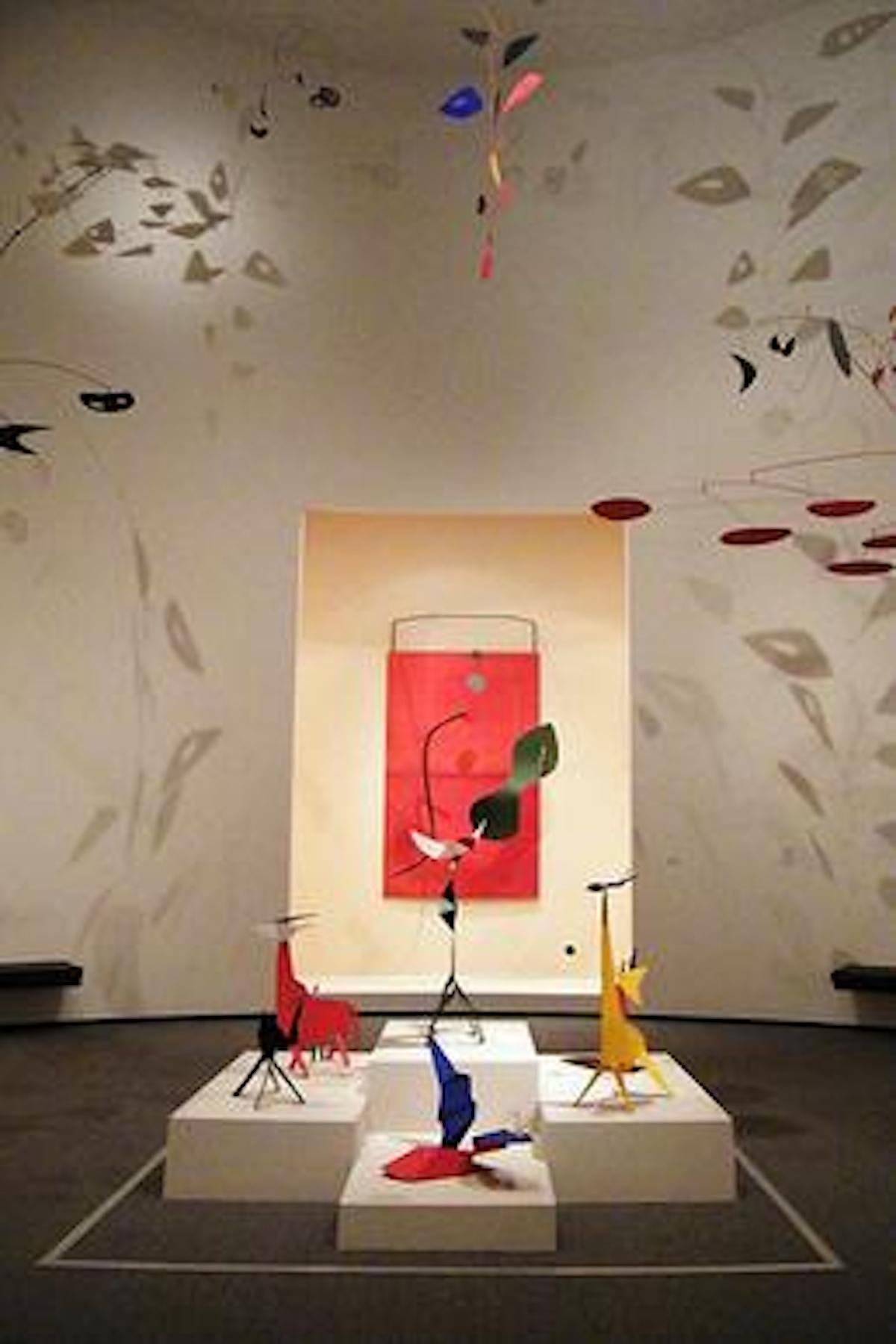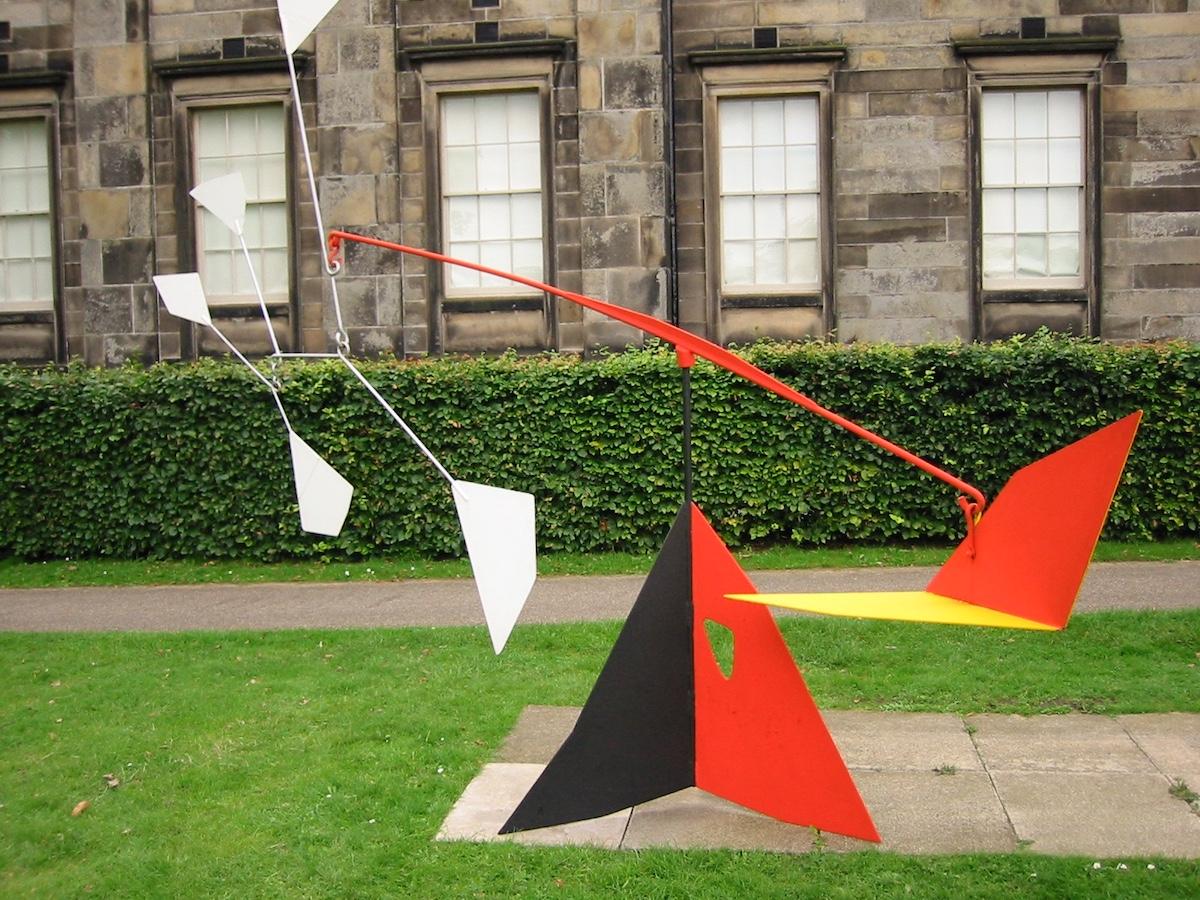Calder moved to New York in 1923 and studied art while working for the National Police Gazette. Calder’s assignment to sketch the Ringling Bros. and Barnum & Bailey Circus in 1925 began a lifelong fascination with circus imagery. After moving to Paris in 1926 to continue his art studies, Calder befriended a group of avant-garde artists, including Fernand Léger, Jean Arp, Piet Mondrian, and Marcel Duchamp. In 1928, Calder met Louisa James, the grand-niece of novelist Henry James, on a transatlantic voyage. The pair married in 1931.
While Calder had started to explore abstractionism, he didn’t fully embrace abstraction until after a tour of Mondrian’s studio, which had a considerable impact on his sensibilities. Already an artist with moderately successful solo shows on both sides of the Atlantic, Calder had his first abstract exhibition in Paris in 1931 and exhibited with the Abstraction-Création group in 1933.
































